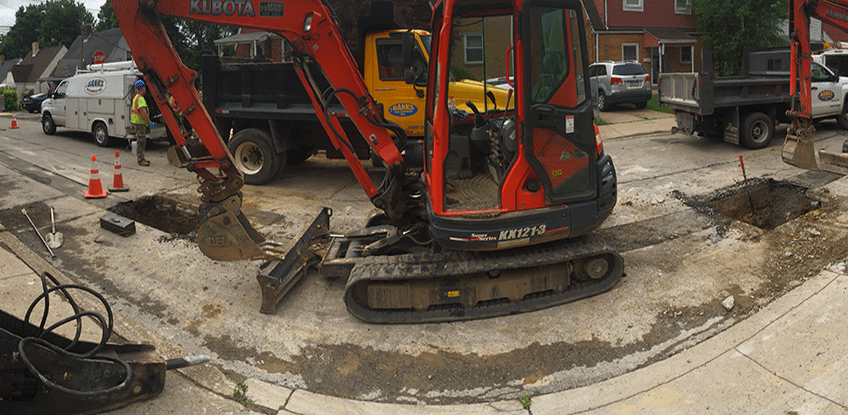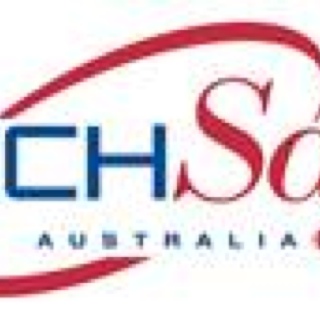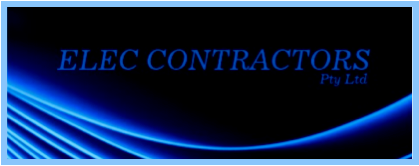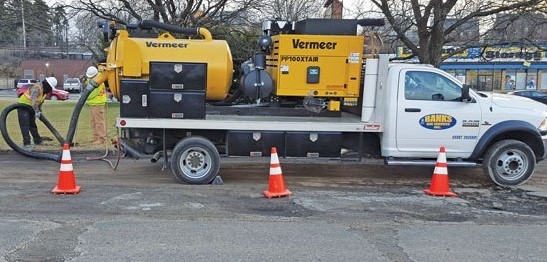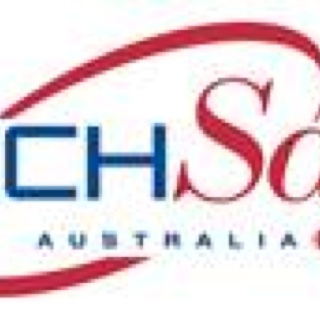Information
Information:
-
Company Name:
-
Jobsite Foreman:
-
Audit Type:
-
Prepared by:
-
Audit Location:
-
Conducted on:
Job Classification
Jobsite Classifications:
-
Work Type:
-
Gas Company:
-
Required Training Completed
-
OQ Valid
-
Sub Contractor Involved?
-
Name of Sub Contractor:
Safety and PPE
-
Work Zone
Work Zone:
-
Are Flaggers Required?
-
Crew properly places Road Work signs <br>
-
Crew properly places cones around vehicle/ work area
-
Work Site Orderly (minimal trip hazards)
-
Pedestrian traffic addressed as necessary/Sidewalk Closed signs posted
-
Flagger 1- CHIEF FLAGGER:
-
Class 2 Safety Vest worn
-
Hardhat worn
-
Safety Glasses worn
-
Training card available
-
Flagger 2- FLAGGER NAME:
-
Class 2 Safety Vest worn
-
Hardhat worn
-
Safety Glasses worn
-
Training card available
-
Work Zone Set Up:
Work Zone Set Up:
-
Is the Road Closed?
-
Proper Signage placed
-
Cones placed to barricade road
-
Flaggers in proper position to monitor road access
-
Work zone signs properly placed (100 feet apart in urban area, 200-300 feet apart in suburban area , 500 feet apart in rural area or high speed road)
-
Flaggers positioned 40 feet in front of taper area
-
Taper area contains at least 6 cones
-
Work Zone contains a buffer area for errant vehicles
-
Cones are properly placed around work area.
-
Flaggers have an escape route
-
Flaggers consider the curves of the road when setting up
-
If applicable, arrow-board is properly positioned and correct signage is placed
-
Flagging Operations
Flagging Operations:
-
Flaggers maintain adequate communications while flagging
-
Flaggers are not on cell phone
-
Proper flagging equipment selected for road type (slow/stop paddles used in one lane-two way road, red flag used in intersections)
-
Flaggers use proper techniques when flagging
-
Flagging Equipment meets proper standards
-
Night Flagging
Night Flagging:
-
Light stand positioned properly
-
Flaggers wearing Class 3 vest
-
Illumination disks used in taper area
-
Red light wands used in addition with a slow/stop sign or red flag
-
Personal Protective Equipment
Personal Protective Equipment:
-
Employee 1- FOREMAN:
-
Hardhat worn
-
Safety Vest worn
-
Safety Glasses worn
-
Hearing Protection worn as appropriate (85 dB or higher)
-
Gloves worn as appropriate
-
Foot Protection
-
Face Protection worn when exposed to flying debris
-
Employee 2- LABORER:
-
Hardhat worn
-
Safety Vest worn
-
Safety Glasses worn
-
Hearing Protection worn as appropriate (85 dB or higher)
-
Gloves worn as appropriate
-
Foot Protection
-
Face Protection worn when exposed to flying debris
-
Employee 3- LABORER:
-
Hardhat worn
-
Safety Vest worn
-
Safety Glasses worn
-
Hearing Protection worn as appropriate (85 dB or higher)
-
Gloves worn as appropriate
-
Foot Protection
-
Face Protection worn when exposed to flying debris
-
Employee 4- LABORER:
-
Hardhat worn
-
Safety Vest worn
-
Safety Glasses worn
-
Hearing Protection worn as appropriate (85 dB or higher)
-
Gloves worn as appropriate
-
Foot Protection
-
Face Protection worn when exposed to flying debris
-
Excavation Safety
Excavation Safety:
-
Valid One Call/Known utilities properly marked and identified
-
Excavations 5 feet or greater have protective system in place (trench box)
-
Excavations 4 feet or greater have a means of egress/ladder
-
Ladder extends 3 Rungs above the excavation
-
Spoil Pile and tools/equipment is at least 2 feet away from excavation edge
-
1 Competent person is on the job
-
Employees use hand digging in the tolerance zone (18 inches) around utility
-
Operators use prudent and due care techniques while digging (swamper/spotter used to expose utilities)
-
Operator wears seat belt when excavator is in operation
-
Employees not in swing radius of excavator boom
-
Excavator bucket/boom lowered when not in operation
-
Employees exercise caution while working around excavations.
-
Electrical Safety
Electrical Safety:
-
Extension cords and power tool cords not frayed or worn
-
Ground Prongs in place and not damaged
-
Generators are GFCI protected
-
Employees understand how to reset GFCI
-
Power tools handles are rubber insulated
-
Equipment and Tools
Equipment and Tools:
-
CGI Calibrated and working properly
-
Equipment and tools in safe operative condition
-
Tools are stored in designated staged area as appropriate to minimize trip hazards.
-
All air hose connections contain a Safety Whip Cord to prevent accidental whipping if connection disengages.
-
Employees use tools properly and precautions are taken while in use
-
Proper tool grip/footing
-
Vehicle Safety/DOT
Vehicle Safety/DOT:
-
DOT Vehicle Number:
-
Employee driving DOT vehicle:
-
Free of Clutter
-
Crash Packet Available
-
Registration/Insurance available
-
Drivers License available
-
DOT Medical Cards available
-
Pre-Trip Inspection completed
-
In-Cab Fire Extinguisher inspected and secured if applicable.
-
Flares/Triangles available
-
Vehicle functioning properly
-
Wheel chocks in place
-
KUV Vehicle Number
-
Free of clutter
-
First Aid Kit available
-
Spill Kit available
-
Crash Packet Available
-
Vehicle functioning properly
-
Wheel chocks in place
-
Meters upright, capped, and secured
-
Load Securement
Load Securement:
-
Trailers/compressors properly attached to trucks
-
All tools/equipment properly secured.
-
If hauling, equipment is properly tied down using proper DOT tie down methods
-
Ergonomics
Ergonomics:
-
Safe Lifting practiced
-
Employees ensure proper footing/grip
-
Hazmat/Chemicals
Hazmat/Chemicals:
-
Secondary containers properly
-
Flammables in proper safety approved cans
-
Safety approved cans free of excessive wear and dents
-
Fire Protection
Fire Protection:
-
Fire Extinguisher Upwind of Excavation
-
Fire Extinguisher Inspected
-
Environmental
Environmental:
-
Wet methods used when exposed to Crystalline Silica (I.E: Saw Cutting)
-
Silt Socks used as appropriate
-
Filter bags used as appropriate
-
Hazard Communication
Hazard Communication:
-
Pre-Job Briefing completed (Job site and task hazards relayed to employees)
-
Initiate Stop Work Authority (SWA) if appropriate.
-
Employees demonstrate hazard recognition, avoidance, and communication
Service Line Installation
-
Abandonment of Old Service Line
Abandonment of Old Service Line:
-
Verified gas is shut off at accessible locations (Via: curb box, and meter shutoff valve)
-
How was the gas stopped prior to separating?
Stopping Gas Method: Using Punch Tee:
-
Proper clothing used (long sleeve cotton shirt)
-
Fire Extinguisher Readily Available
-
Properly winds cutter down counter clockwise to stop gas flow
-
Verifies complete shut off
Stopping Gas Method: Service Line Squeeze Off:
-
Selected proper squeeze off area. No closer than 12" from any fitting
-
Anti-static spray used on pipe to dissipate charges accumulated on pipe
-
Proper clothing used (long-sleeved cotton shirt)
-
Squeeze tool properly grounded
-
Squeeze off rate properly followed (1 inch per minute)
-
Verified completion of squeeze (gas fully stopped)
-
Release rate properly followed (1/2 inch per minute)
-
Squeeze area properly marked and labeled after completion
-
Separation of Steel Pipe
Separation of Steel Pipe:
-
Temporary bonding cables used to achieve proper grounding
-
Separated as close to the main as practical
-
Capped live and dead end section of pipe
-
Properly Dismantled meter/regulator set
-
Stray voltage checked prior to dismantling meter set
-
Installation of New Service Line
Installation of Pipe:
-
How was the service line installed?
-
Utilities located, marked, and avoided when necessary
-
Trench is uniform, free of rocks larger than 6 inches, and provides pipe support
-
Installs pipe at proper depth (at least 18 inches) and is perpendicular to main
-
Tracer wire installed with pipe
-
Marker Balls installed as appropriate
-
Care taken while storing and handling pipe
-
Warning tape installed 6-12 inches below planned final grade
-
Sewer Locate performed/ Pre-job walk conducted
-
Uses pipe shims on carrier pipe to prevent gouges
-
Uses care when handling pipe
-
Tracer wire installed and properly connected to carrier pipe for future locates
-
Marker Balls installed where required
-
Warning tape installed 6-12 inches below planned final grade where needed
-
Pre-Job walk conducted to prevent cross bores
-
Sewer Locate/Pull Back Camera verified no cross bores
-
Operates mole properly
-
Installs pipe at proper depth (at least 18 inches) and is perpendicular to main
-
Tracer wire installed with pipe
-
Marker balls installed as appropriate
-
Care taken while storing and handling pipe
-
Warning tape is installed 6-12 inches below planned final grade when needed
-
Meter/Regulator Set Installation
Meter/Regulator Set Installation:
-
Riser encased when protruding above ground and filled with adequate backfill
-
Meter brackets installed properly
-
Meter set installed in an easily accessible location
-
Meter set bar sits 36 inches above ground
-
Meter is plumb and level
-
Regulator vent is at least 36 inches from any window or opening and is pointed downward with an insect screen
-
Meter set assembly configured as per company policies and procedures
-
Tracer wire attached to meter set properly and capped
-
Meter set painted where required to prevent corrosion
-
Meter Protection Installed when required
-
Is the Meter Set Remote?
-
How Many Posts are required?
- 1
- 2
- 3
- 4
- 5
- 6
- 7
- 8
-
Meter posts installed at proper distances from meter set (1 foot)
-
Meter Posts Installed at Proper Depth (2 feet)
-
Concrete mix used
Meter Move Out (Inside-Outside Steel Piping):
-
All steel pipe (nipples) is properly threaded (10 threads)
-
Pipe threading machine used properly and pipe lubed accordingly
-
Approved pipe dope and tevlon tape applied to proper threads
-
Fittings properly tightened onto steel pipe for at least 6 threads (4 threads showing)
-
Configured as per company policies and procedures
-
Pipe Joining Methods
Pipe Joining:
-
Electrofusion
Electrofusion:
-
Fusion Box acclimated to weather conditions if applicable
-
Properly prepared pipe surface (cleaned, marked, and scraped using approved scraper)
-
Alcohol wipe used to clean pipe and fitting surface
-
Clamp properly installed
-
Once clamped, fitting is properly traced to monitor any movement
-
Terminal leads connected properly
-
Verified proper fitting and burn time
-
Employee out of excavation during fusion process
-
Employee allows joint to cool for correct time according to manufacturers instructions
-
Employee properly signs the fusion listing: initials, last 4 digits of SSN, date, burn time, and cool time
-
Socket Fusion
Socket Fusion:
-
Properly prepared pipe surface (cleaned with alcohol wipe, marked, and champfered using approved champfer tool)
-
Properly positioned cold ring clamp
-
Verified proper heater temperature of 500+/- 10 degrees
-
Inserted pipe/fitting on proper ends of iron (pipe=female end: fitting=male end)
-
Heated pipe and fitting for proper time (10 seconds)
-
Used quick snap action to remove iron. Briefly inspected melt.
-
Inserted melted fitting onto melted pipe ensuring not to twist
-
Buried fitting onto cold ring clamp and allowed joint to cool (15 seconds)
-
Proper inspection of joint
-
Mechanical Fittings
Mechanical Fitting:
-
What type of Mechanical Fittings were installed?
- Stab Fitting
- Compression Fitting
- Met Fitting
-
Properly cut and prepared pipe surface. Pipe/fitting clean and contaminant free
-
Properly measured and marked pipe
-
Properly champfered pipe ends
-
Installed as per manufacturers instructions
-
Inspected joint
-
Signed joint as applicable
-
Pressure Testing
Pressure Testing:
-
Includes all valves and fittings when testing
-
Pressure tested service line for 5 minutes at 1.5 x MAOP (90 pounds)
-
Operates Kuhlman Gage properly
-
Uses leak detector solution (leak seek) on fittings and valves while testing to verify no leaks
-
Foreman documents pressure test results
-
Tapping Pipelines Into Service
Tapping Pipelines Into Service:
-
Ensures meter shutoff valve is fully closed
-
Proper PPE/clothing used (long sleeved cotton shirt)
-
Fire extinguisher readily available
-
Properly winds cutter down counter clockwise in punch tee to punch hole into main
-
Once fully tapped, cutter is wound up and is positioned at proper height just below the cap
-
Uses leak detector solution (leak seek) on fittings and valves after tapping to verify no leaks
-
Corrosion Control (If Applicable)
Corrosion Control: Installing Anodes on Steel Main:
-
Pipe to soil reading taken to determine if anode is required
-
Pipe cleaned to bare steel
-
Properly prepared anode lead wire
-
CGI taken to verify no gaseous atmosphere prior to burning anode onto pipeline
-
Anode positioned at proper distance away from pipeline
-
Exothermic weld properly performed
-
Verified good lead wire connection
-
Properly coated the weld
-
Test station installed as required
-
Backfilling
Backfilling:
-
Suitable backfill material used
-
Tamped properly in intervals
Final Page
Additional Notes:
-
Reviewed Gas Standard on the Task Being Performed
-
Pre-Job Briefing Performed on job task
-
Pre-Job Pictures Taken
-
Post-Job Pictures Taken
-
Further Action Required
-
General comments
-
Years of Service
